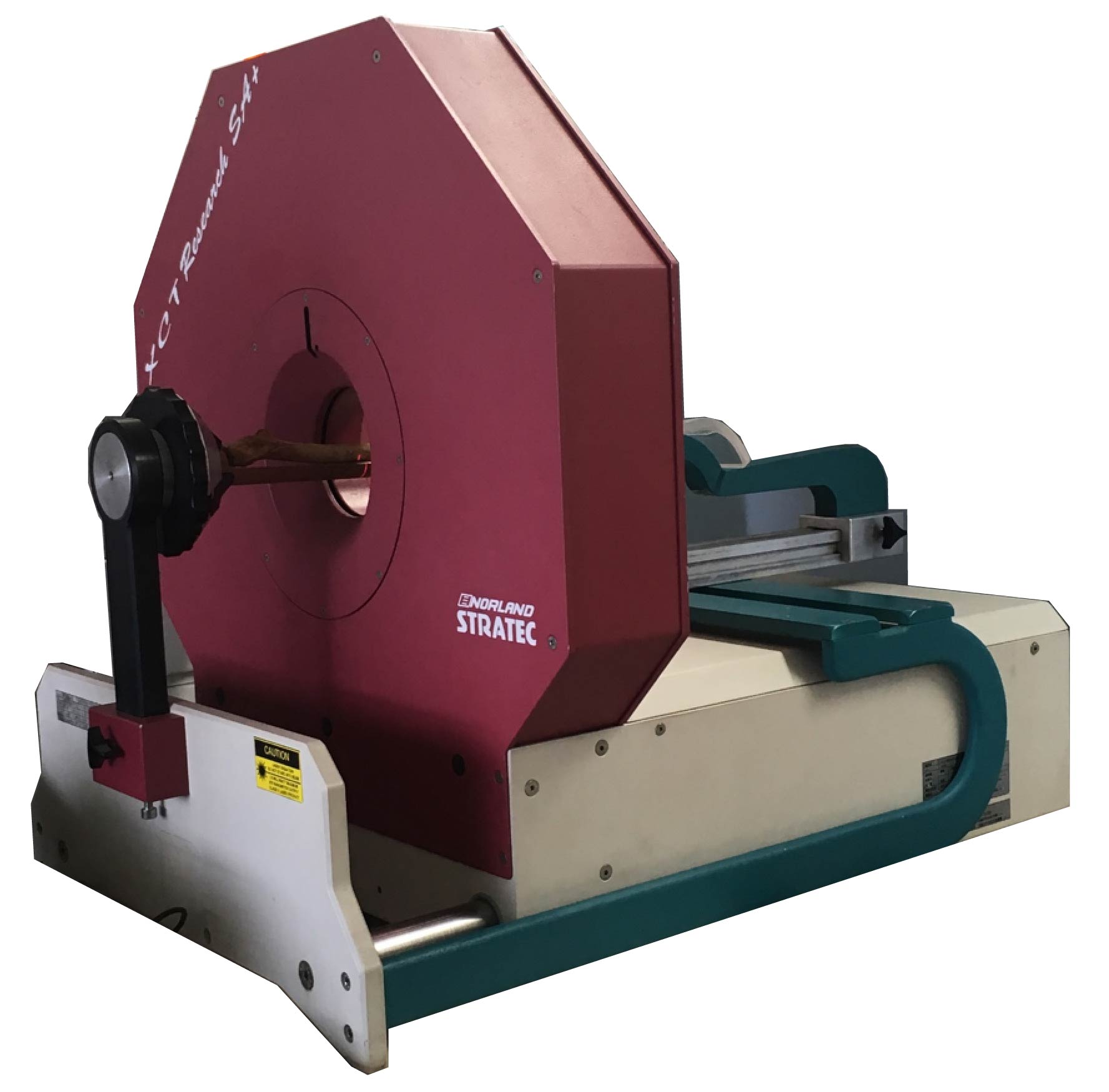Week 5: Scanning bones, scanning Kyoto
Konnichiwa from the PRI! The halfway mark for the JSPS summer program is already here; it has gone by incredibly fast, between research and weekend sightseeing. This past week, I finished osteometric data collection and moved on to CT scanning.
CT Scanning
Here at the PRI, Dr. NishimuraŌĆÖs lab has a STRATEC pQCT scanner (shown below), which is a smaller, compact CT scanner that is suitable for smaller bones such as the macaque femora examined for my project. The acronym pQCT stands for peripheral quantitative computed tomography. This instrument allows researchers to look not only at the cortical and trabecular bone within the shaft, but also at bone mineral density, cortical thickness, and marrow/cortical cross-sectional area. Essentially, the pQCT scanner allows us to look at the internal bone by taking up to hundreds of ŌĆ£slicesŌĆØ.

I can examine each of these transverse section slices to detect differences in bone density among specimens from individuals originating from different geographical regions. The thickness of cortical bone is also important in my project because it is dependent on the formation dynamics of the growth plate at the time of original bone definition and of later remodeling conditions as the bone elongates. Scanning a whole bone is a time-consuming process and can take an entire day for just one bone. However, I am examining only a few slices from the midshaft region of the femur, so this takes less time, around 40 minutes per specimen.
Visiting Kyoto
This weekend included a special opportunity for me to travel to Kyoto. My host, Dr. Nishimura, arranged a short visit for me to the main campus of Kyoto University where Dr. Morimoto, Assistant Professor in the Laboratory of Physical Anthropology, has kindly agreed to show me the laboratory and associated research facilities. However, since this laboratory visit will not take place until Tuesday (and Monday is a national holiday), I went to Kyoto early to explore. I met up with fellow č²╝¦ų▒▓ź Stater and JSPS summer researcher, Heather Lawrentz, to explore the Arashiyama district of Kyoto. We visited the Iwatayama Monkey Park, home to a troop of over 170 Japanese macaques. It was great to see my study species in their (semi)natural habitat. The macaques there roam freely, and you can even feed them!

We trekked through the famous Sagano Bamboo Forest, often included on website lists of the most beautiful forests of the world.

And, we visited the Imperial Palace, the former ruling palace of the Japanese emperors until the capital was moved to Tokyo in 1869. The grounds include breathtakingly beautiful gardens.

This upcoming week also happens to be the week of Gion Matsuri, one of the most famous festivals in Japan. This year marks its 1150th anniversary, which is incredible! It originated in 869 when a plague broke out in Kyoto, so the festival was created to summon and transform Gozu Tenno (a deity related to plagues and disasters) into a protective spirit to ward off disease. In the three nights leading up to the parade, there are many evening street festivities and opportunities to view up close the elaborately decorated and multi-storied parade floats, which can weigh up to several tons!
Stay tuned next week for my visit to Kyoto University and the main parade for Gion Matsuri!
Sayonara,

